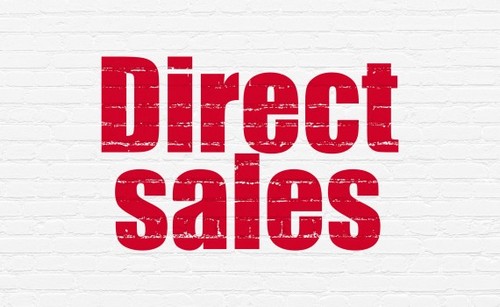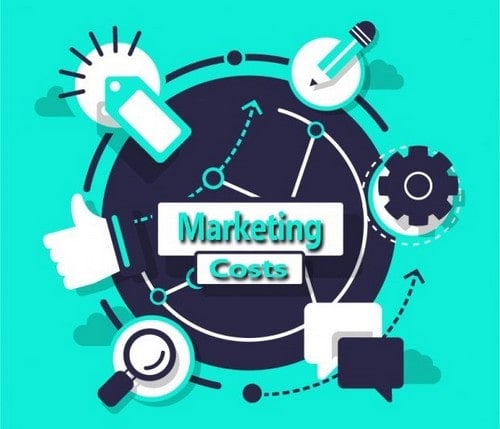Sales channel strategies are plans to be able to move the products manufactured by the company to its end users with the help of chain of commerce. The main purpose of sales channels is to focus on different selling vessels by segmenting sales operations.
For example, a company can contrivance a channel sales strategy to sell its products using dealers, in-house sales team, affiliates, retailers, or by direct marketing. You can opt for any type of the third party that will offer your products to your end-users.
Making use of the networks of channel partners can increase the value of your business in addition to boosting your sales. There are different types of channel partners, such as distributors, resellers, and value-added providers.
You can choose channel partners as per the need of your business and make your products and services available to your buyers. Selling through sales channel partners is also cost-effective as you don’t have to make an additional expenditure to maintain local operations.
Table of Contents
Type of sales Channel strategies
There are various types of sales channel strategies available that you can choose for your business.
1) Direct Sales
In this type of sales channel, the vendor sells the products directly to the customers. Sales can be made either with the help of salesforce or by selling through an e-commerce website. In addition to this, sales can be made using catalogues.
2) Indirect Sales
A seller can sell products through intermediates. In indirect sales, products are sold through an online or physical store. In two-level distribution, the products are first sold to distributors and distributors further provide products and services to the customers.
In addition to retailers and distributors, consultants managed service providers, original equipment manufactures, Sis, wholesalers, and independent software vendors are also considered as channel partners.
3) Consumer Sales
Companies which sell to consumers might take different channel strategies and have a quite different meaning for direct and indirect selling.
For example, in multichannel marketing companies sell through direct channels such as using catalogs, email campaigns or direct, etc. or they can also sell through indirect channels such as by attracting customers through websites or social media platforms.
Whereas, in omnichannel marketing, the business provides opportunities to its customers to have seamless shopping experience no matter they are shopping from mobile phones, desktops or shopping from a physical store.
Advantages of Sales Channel
1) Effective scaling
Scaling up your business become easy if a business has a well-established channel model with co-marketing, revenue sharing, incentives sharing, etc. A business can be scaled effectively just by adding more channel partners into the mix.
You can manage many partnerships with the help of one manager, which is quite inexpensive as compared to having an entire in-house sales team.
2) Low Sales, distribution, and marketing costs
The one benefit of having channel partners to handle your sales is that they have already established a presence in the market, have good relations with customers, and customers trust them because of their brand values advertised by them.
Hence, the sales channel is an inexpensive method to enter a new market or new region.
3) Low cost for expanding into new markets
The sales channel is an effective method to get into a new market or new region with a very little amount of investment. If you use sales channels, then you are not required to advertise in the local market, manage offices in remote locations, or hire and train new staff people.
Disadvantages of sales Channel
1) Less Predictable revenues
It is really difficult to determine the full revenue as sales channel partners don’t share full information with you. In addition to this, you also lose control over total sales made.
2) Less control over Sales Process
When you sell through a partner, then there is always a third person between you and your customers. in most of the cases, organizations are not a part of the overall sales process. Therefore, they don’t have or have very little control or influence on sales opportunities.
3) Partner Discounts
You don’t get partners free of charge. You need to pay a fair amount of fees to them to sell your products. Sometimes fees could be sharing 40-50% of profit with your partners.
How to develop a Sales Channel Strategy?
Developing a sales channel can be simple or complex, depending on the number of intermediaries and the type of intermediaries involved in the distribution process. Most of the time, manufacturers force multiple sales channel to boost their revenue.
Read the following steps carefully to develop a proper sales channel strategy.
a) Determine the proper channel
to have a successful and revenue-generating business, one should first determine which sales channel will work for your product. Ask yourself questions such as should you go to a retailer or wholesaler to sell your product, or you can sell your product?
This type of questions is important to be answered as they provide you insight on how many businesses you should involve selling your products because you are likely to receive less profit with a long chain of intermediaries and selling directly to the consumers will result in maximum profit.
Because of this reason, many manufacturers prefer to sell directly to consumers rather than involving a number of intermediaries.
b) Consider Your Audience
Considering your audience is very important for you before devising a sales channel strategy that will work for your business. Ask yourself following questions such as what are the requirements or needs of your customers?
How they usually access your products or services? Answers to these questions will help you to determine a suitable distribution channel for your business.
However, no method is a foolproof method; most manufacturers determine the best channel for them through trial and error method.
A direct selling method is a cheap and easy way to reach your audience, whereas an indirect method will help you to serve a larger audience. Therefore, it is important for you to keep your audience in mind before selecting sales channels.
c) Evaluate and Adapt
It is obvious that some sales channels will work for you, and some will not. Therefore, it is important for you to evaluate the performance of each channel to make your sales channel strategy work best.
Most of the times, businesses determine the profitability of their sales channels with the help of strategic profit models.
Businesses conduct periodic satisfaction survey with buyers and sellers to determine the satisfaction level of sales partners. All these metrics collectively provide the complete picture of sales channel strategy and how it can be improved.
Sales channel strategies are devised to boost the sales of a product or to enter a new market. These strategies are mostly devised by the end retailers who are responsible for selling directly to the consumers.
Devising sales channel strategies involve followings:
1) Understanding demand
A retailer is required to move inventory from one point to another to meet demand, and it costs to a retailer to purchase through sales channels. Hence, a retailer is required to make a purchase in bulk and make estimates in advance to avoid over purchasing.
By being aware of the demand of the product in the market, liberates businesses about the purchasing strategies and marketing cycle.
2) Marketing in Advance
Marketing in advance is a strategic sales channel strategy used to testify demand and preventing mismanagement of orders. For example, pre-orders can be a good strategy to determine the exact product, and it can also be beneficial for drop-shipping distribution.
This model not only have less risk and overhead, but it also offers reduced margin. The drop shipper markets sell products from wholesaler catalogues and have a logistics or wholesalers to manage a channel and get inventory delivered.
3) Multiple Channel strategies
Multiple channel strategies are suitable for businesses with diverse product lines.
Opting for more than one sales channel reduces the complete dependability on one sales channel and ensures the smooth running of the business with the help of various alternative channels. It also ensures price flexibility as products are moved in the market through various means.
Hence, a consumer can compare the price using each strategy and can buy a product through a strategy that works for him or provides the lowest cost option or provides the lowest lag time for the product’s delivery.
4) Sales and Distribution channels
Sales and distribution channels are interlinked with each other as the ability to sell, and source can’t be separated. Expensive items are divided into sales territories, and regions, and dealers are provided guaranteed access to the market without the interference of the same brand competition.
This channel moves from manufacturer to distributor. The distributors are responsible for managing dealers and providing inventory and dealers are responsible for selling to consumers.
Liked this post? Check out the complete series on Sales




